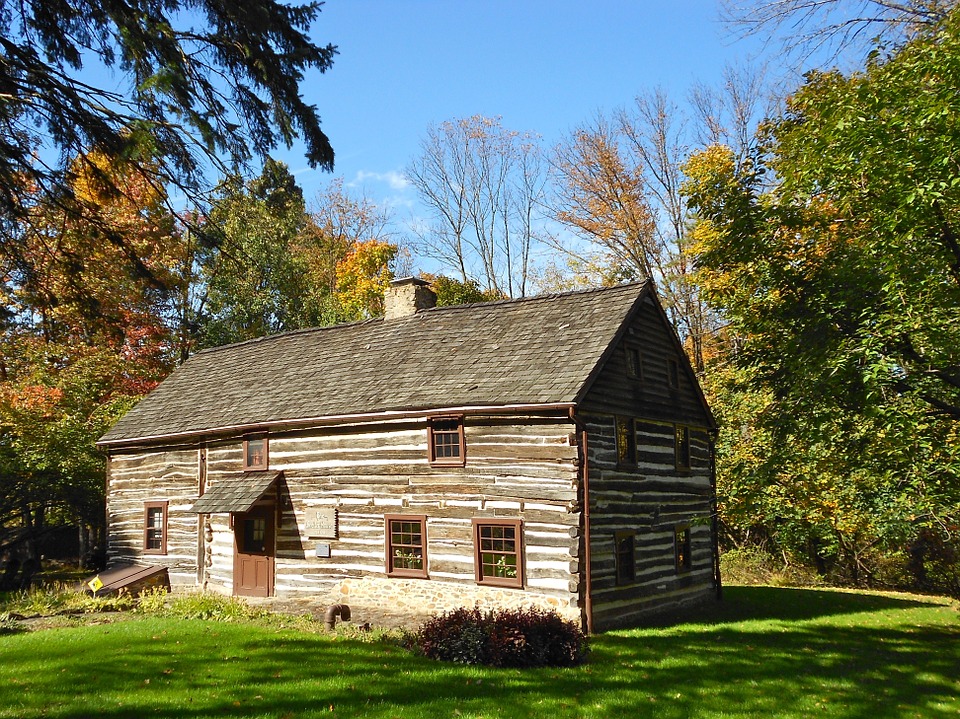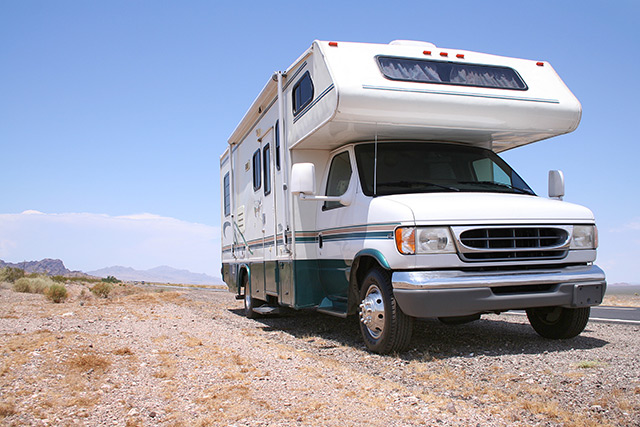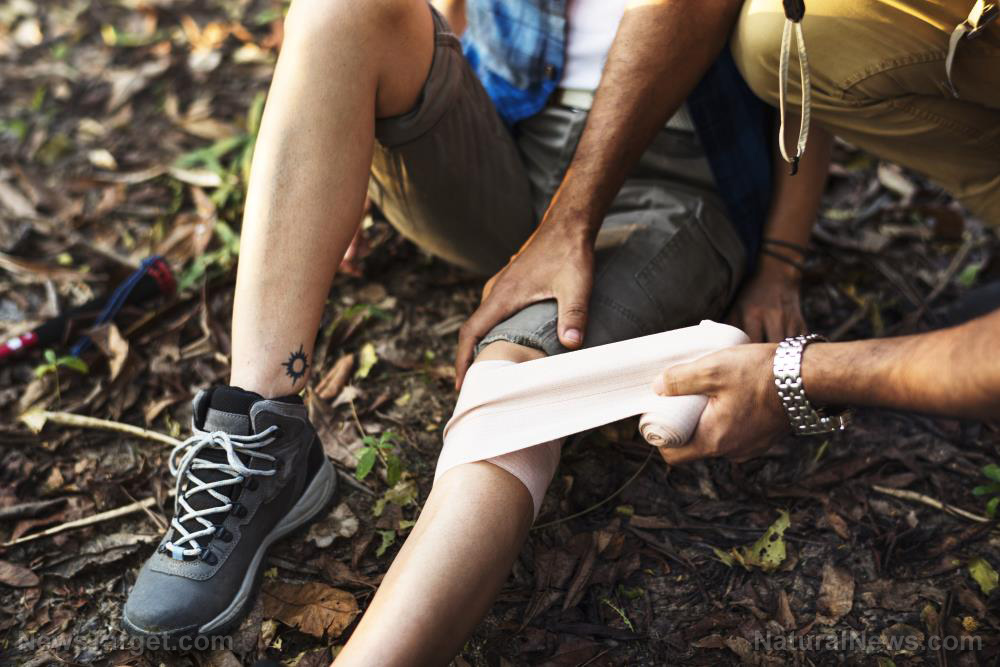Shelter, fire, water and food: 4 Things you need to survive in the woods
03/23/2022 / By Zoey Sky

Whether you’re camping or bugging out in the woods, you need four things to survive: Shelter, fire, water and food. Ideally, you should have a bug-out bag (BOB) with the right kind of gear to help you find food and water, start a fire and build a shelter.
Detailed below are tips on how to survive in the woods. (h/t to TheSurvivalistBlog.net)
This information is applicable year-round, but it is best suited for survival in woods that fall into the Carolinian and boreal forest zones. You can often find trees like beeches, maples, oaks, pines and spruce trees in these areas.
Remember that you won’t survive long without shelter, fire, water and food, especially if weather conditions are bad or if you have underlying health conditions that need immediate medical attention.
Prioritize the four items below when planning how to survive in the woods.
Shelter
When you’re bugging out after SHTF, your shelter will protect you from the elements. Shelters require a walled enclosure and basics like a bed or a sleeping bag so you can rest when needed.
There are many ways to create a shelter but you can narrow down the type you need based on the environment and your situation.
Tarp
With a tarp in your BOB, you can build a shelter that will provide protection from the elements.
A 10×10-foot tarp can be folded so it doesn’t take up a lot of space in your bag, but it will provide a lot of floor space if set up within the trees. Choose a tarp with multiple tie-out points for maximum stability and configurations.
A-frame shelter
An A-frame shelter is one of the easiest to build. Use a couple of large Y-shaped sticks to hold up a sloping ridge pole and create a small area underneath where you can sleep.
Next, line the sides with poles and debris from the forest to create a wind-resistant shelter that will stay up even if it rains.
Fire
Building and maintaining a fire can be hard, especially in changing climate conditions. But with some basic abilities and tools, you can start a fire in the woods.
With a fire, you can stay warm, cook food and boil water. It will also help protect you from wild animals. (Related: Always bring a bug-out bag, but learn how to survive without one when SHTF.)
Look for dead trees that will make for excellent fuel for fires because they don’t have much moisture locked within the trunk.
Trees standing but missing large sections of bark are generally dead. If you’re not sure, knock something hard against the tree and listen. If it’s a hollow knock, the tree is most likely dead.
Avoid burning “green” or live trees because the fire they produce will be difficult to start up. Even if you get the fire going, it will smolder or not stay hot for long.
Look for kindling like small twigs about the size of pencil lead. Next, search for pencil-sized, small branches, medium branches and larger logs.
Gradually introduce bigger pieces of wood when the fire is strong enough to handle. This will build up the fire with minimal chance of snuffing it out.
When prepping a firestarting kit for your BOB, include items like tinder, a lighter, stormproof matches and a spark rod or ferro rod.
Water
You need a source of clean water so you can refill your supply.
When searching for water sources, remember that clear water and clean water aren’t always the same thing. If nothing is growing in the water or you see no signs of life, don’t use the water.
A spring is a great water source, but you still need to filter it since chemicals could have leached into the water. Water sources that are flowing fast like creeks or rivers are the most ideal because there is no stagnant water for bacteria and algae to grow.
Never drink from swamps or any wetland because these are decomposition sites for plant material that produce a variety of dangerous bacteria and pathogens that can make you sick.
Don’t drink water from the ocean. The salt content of seawater is incredibly high and it will make you more thirsty. Drinking seawater may even cause dehydration.
Food
Emergency rations in your BOB can only get you so far and you need to establish a sustainable food source if you’re spending a long time in the woods.
Fortunately, there are many sources of food in the woods that you can take advantage of year-round. During spring and summer, you can forage for wild edibles. During the cold months, you can hunt and preserve food.
If you’re in a forest with a body of water, you will need a basic fishing kit in your BOB. Prep a small tin box with some fishing line and hooks.
Basic prepping gear that will help you survive in the woods
Here is a list of inexpensive gear that you should have in your BOB or survival kit so you can survive in the wilderness:
- Compact camping stove
- Compass with a signal mirror
- Duct tape
- Firestarting kit
- Hand crank flashlight
- Hand crank saw
- A machete and a survival knife
- Metal cup or pot
- Tarp
- Safety whistle
- Solar or hand crank headlamp
- Water purification tablets and a personal water filter
Keep all your prepping gear in a sturdy backpack and you’ll be good to go when SHTF.
Watch the video below to learn how to start a fire in the woods.
This video is from the Connor Lindeman channel on Brighteon.com.
More related stories:
Tips on building pocket survival kits.
How to use pine sap in survival situations.
Sources include:
Submit a correction >>
Tagged Under:
bug out, bug out bag, firestarting, food, Gear, off grid, preparedness, prepping, self sufficiency, self-reliance, shelter, SHTF, survival, survival gear, survival skills, water
This article may contain statements that reflect the opinion of the author
RECENT NEWS & ARTICLES
COPYRIGHT © 2017 GEAR.NEWS
All content posted on this site is protected under Free Speech. Gear.news is not responsible for content written by contributing authors. The information on this site is provided for educational and entertainment purposes only. It is not intended as a substitute for professional advice of any kind. Gear.news assumes no responsibility for the use or misuse of this material. All trademarks, registered trademarks and service marks mentioned on this site are the property of their respective owners.




















